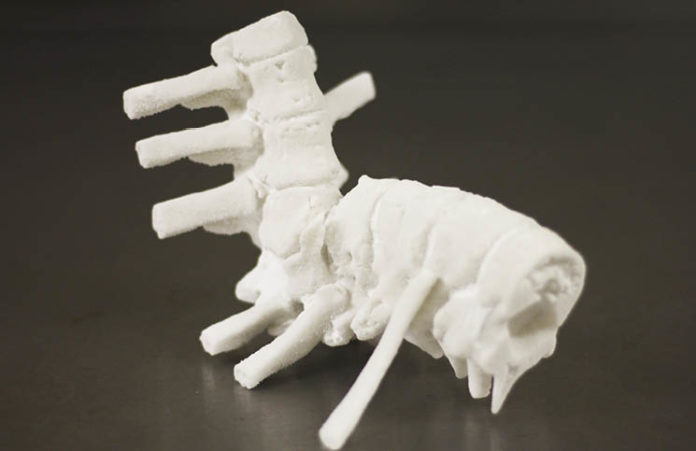
Until recently orthopaedic surgeons have had to rely on two dimensional imaging modalities, for example X-rays, computer tomography (CT) or magnetic resonance imaging (MRI), to assess ailments such as tumours, fractures or deformities affecting their patients’ musculoskeletal system.
With the support of the Faculty of Medicine and Health Sciences (FMHS), doctors at Stellenbosch University (SU) and Tygerberg Hospital’s Division of Orthopaedics have created a 3D printing laboratory and are now employing three dimensional (3D) printing techniques to create models of patients’ anatomy. This process assists them in planning, practicing and executing complex and challenging surgical procedures.
“It is a relatively novel way for surgeons to visualise and assess a patient’s anatomy and can help them to plan and perform procedures with a greater measure of safety and efficiency,” says Dr Rudolph Venter, an orthopaedic surgeon with the FMHS. Doctors can “recreate” any anatomical structure by importing a 3D image – obtained from 3D medical scans such as CT or MRI – into a software programme, which then enables them to print a plastic 3D model of the image.
3D printing is not a new technology, but has been considered too costly for everyday use until recently. In recent years, however, 3D printers have become much more affordable and the required software is now freely and widely available. This has enabled surgeons to comprehensively explore the potential benefits of using 3D models in medical practice. Orthopaedic surgery is a good place to start this journey of discovery, as the work of the orthopaedic surgeon is very tactile by nature.
According to Dr Venter, orthopaedic procedures require a great deal of pre-operative planning. Historically orthopaedic surgeons used X-rays and paper templates to plan procedures, but now X-rays, CT scans or MRI images are electronically manipulated to help plan for operations.
“For instance, we would print a patient’s thigh bone with a deformity and rehearse the procedure, or physically experiment with implants in the model as if we were performing the exact procedure on the patient. This enables the surgeon to enter the operating room with confidence, knowing what size implant to use and where to make all the bone cuts,” explains Venter.
3D printed models can also assist surgeons in visualising their patient’s anatomical structures as they are operating. The use of 3D models in medicine is not unique to orthopaedic surgery and can be used in other disciplines as well, including cardiothoracic surgery and neurosurgery.
Venter is currently undertaking research to determine and quantify the advantages of using 3D printed models in day to day orthopaedic practice.

